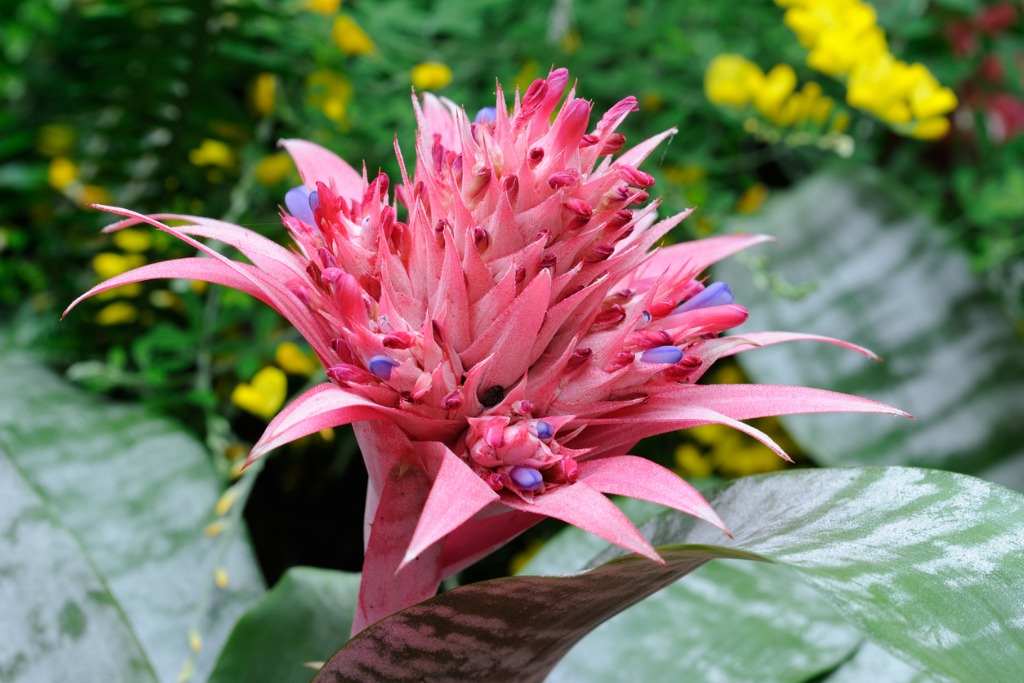Silver vase
(Aechmea fasciata)

Description
Aechmea fasciata is a species of flowering plant in the Bromeliaceae family. It is commonly called the silver vase or urn plant and is native to Brazil. This plant is probably the best known species in this genus, and it is often grown as a houseplant in temperate areas. The plant grows slowly, reaching 30–90 cm (12–35 in) in height, with a spread of up to 60 cm (24 in). It has elliptic–oval-shaped leaves 45–90 cm (18–35 in) long and arranged in a basal rosette pattern. Aechmea fasciata requires partial shade and a well-drained, but moisture-retentive soil. It can also be grown epiphytically, as, for example, with moss around its roots and wired to rough bark. Root rot can be a problem if the soil is too moist. If potted, the soil should contain ample acidic organic matter. The rosette formed by the leaves should be kept filled with water. Propagation is from side shoots that naturally develop around the base of the main rosette. Aechmea fasciata is listed in the FDA Poisonous Plant Database under the section for "Skin irritating substances in plants" and is known to cause contact dermititis, phytophoto dermatitis, and contact allergy. Aechmea is a genus of flowering plants in the family Bromeliaceae (subfamily Bromelioideae). The name comes from the Greek aichme, meaning "spear". Aechmea comprises eight subgenera and around 250 species distributed from Mexico through South America and the Caribbean. Most of the species in this genus are epiphytes.
Taxonomic tree:







